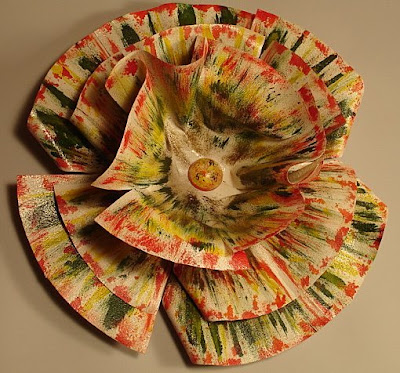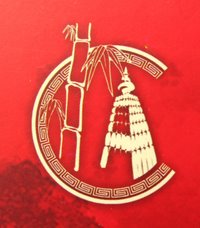
Friday, July 31, 2009
YANGQIN

Wednesday, July 29, 2009
Your Excellencies & My Brothers and Sisters
 Today we stand here in the Town Hall of Kolkata City, to unveil the statue of Lu Xun, the great Chinese personality. Overwhelmed with the greatness of this simple function, I feel encouraged standing here in front of you and speaking on this great occasion with the thought that our Association has contributed towards the growth of our culture, as the famous proverbs says, " It is better to light a candle than to curse the darkness." Usually soon enough, there will be many more candles to light up our way, and the darkness will stay away.
Today we stand here in the Town Hall of Kolkata City, to unveil the statue of Lu Xun, the great Chinese personality. Overwhelmed with the greatness of this simple function, I feel encouraged standing here in front of you and speaking on this great occasion with the thought that our Association has contributed towards the growth of our culture, as the famous proverbs says, " It is better to light a candle than to curse the darkness." Usually soon enough, there will be many more candles to light up our way, and the darkness will stay away.The presence of Lu Xun’s statue in this City of Joy, should enkindle the hope of further understanding of two of the World’s most rich and ancient cultures where people must work for harmony and prosperity. We hope this occasion will lead to necessary encouragement and sharing of goodwill.
This joint project announces to all men of good will and hope, and awaken the desire in all, to come forward and offer our service to the betterment and welfare of all the citizens of this city.
We stand here to express our gratitude to Mr. Qian Jianmin, Mayor of Shaoxing City, Shri Bikash Ranjan Bhattachayra Mayor of Kolkata City, Mr. Mao Siwei, Consul General of China, Mr. Alappan Bandyopadhyay, Kolkata Municipality Commissioner, Ms. Yang Hui Attaché, Embassy of China, with their teams and all who have contributed to make this occasion a reality.
I would like to end this by hoping that this event will give rise : Swei,
To greater confidence to further cooperation and understanding between two great nations ;
Greater understanding of each other’s culture and cooperation to bring the fruit of it to their own citizens ; and
- Greater mutual respect and sense of service for the growth of each individual and society at large.

Tuesday, July 28, 2009
Chinese Poet Finds Place In Town Hall
 28 July 2009 ( Kolkata , Tuesday , page 3 )
28 July 2009 ( Kolkata , Tuesday , page 3 )Subhro Niyogi , TNN
Lu Hsun, the revolutionary poet who is to the Chinese what Rabindranath Tagore is to Indians, will soon be rubbing shoulders with his illustrious contemporary at the Town Hall. Qian Min, the mayor of Shao Xing city, will join mayor Bikash Ranjan Bhattacharya, to unveil the bronze bust of Lu Hsun.
Lu Hsun defied the Chinese aristocracy, shunned the ancient scholarly language and wrote in simplified Chinese. He was born in Shao Xing city in Zhejiang province and became a cult figure in post-liberation China. The citizens of Shao Xing donated the statue to the city's Chinese community earlier this year, responding to the interest shown by Indian Chinese Association (ICA), a Kolkata-based organisation for culture, welfare and development.

"The unveiling of Lu Hsun's statue will mark the beginning of a new chapter in Sino-Indian relations. While economic ties between the two countries have strengthened, culturally, there is a need to understand each other more. Lu Hsun's arrival in Tagore's city can make that cultural connect. Indians can learn about Lu Hsun and the Chinese can learn about Tagore," Chinese consul-general Mao Siwei said.
ICA president Paul Chung said giving Lu Hsun's statue a pride of place in a prestigious setting as the Town Hall was symbolic of a major change in the way Indians perceived the Chinese community. "It's great to see Kolkata that has been home to the biggest Chinese community in India pay respect to the greatest literary figure in Chinese culture. This gives our community a sense of belonging," he said.
That is important, given the mistrust the community had developed after the widespread arrests during the Chinese aggression in 1962. The closure of tanneries four decades later dealt another blow to the community and sparked off widespread immigration.
"Some Chinese felt they did not belong here. Embracing a cultural ambassador like Lu Hsun will go a long way in demonstrating the government's concern for us. It will foster goodwill and restore the community's confidence in India," said Hsieh Ying Hsing, the owner of Big Boss restaurant in Tangra.
The statue has been kept at the Sea Ip Church since it arrived from Shanghai in March. It was first proposed to be installed at a park in Lu Hsun Sarani or CIT Road. After discussions with community representatives and the Chinese consul-general, the Town Hall was chosen as the venue that befitted Lu Hsun's stature.
Saturday, July 18, 2009
AROUND US
 Before we leave the topic of colour behind, it will be good to observe that colour around us do have some influence on us. For example :
Before we leave the topic of colour behind, it will be good to observe that colour around us do have some influence on us. For example :C O L O U R ~~~ I N F L U E N C E
Red ~ Excitement
Pink ~ Emotional healing , Nurturing
Orange ~ Creativity , Balance
Brown ~ Stability , Tranquility
Gold ~ Desire for power , Concentration
Yellow ~ Enthusiasm , Desire to improve
Green ~ Renewal , growth , Soothing effect
Tourquoire ~ Refreshing
Blue ~ Peace , reassurance , patience
Purple ~ Dignity , Self-confidence
White ~ Purity , Simplicity
Silver ~ Coolness , self-sacrificing
Grey ~ Conservative , security
Black ~ Emptiness , Authority , Serious
Tuesday, July 7, 2009
COLOUR HARMONY
 Traditionally, in the five colours, viz. Red, Yellow, Green , Black and White, sometime, we wonder why the prime colour Blue is not among these.The reason is, colour Green is the colour of growing; like colour of leaves during spring; it ranges from yellowish green to dark blue, therefore the colour blue is inclusive of green in the traditional Chinese colour.
Traditionally, in the five colours, viz. Red, Yellow, Green , Black and White, sometime, we wonder why the prime colour Blue is not among these.The reason is, colour Green is the colour of growing; like colour of leaves during spring; it ranges from yellowish green to dark blue, therefore the colour blue is inclusive of green in the traditional Chinese colour.The significance of these five basic colours of the Chinese tradition or traditional Chinese system of colours are :
Red : Good luck, celebration, happiness, joy, vitality, long life, generosity and romance, therefore it is the bridal colour.
Yellow : Nourishing, of royalty, joy, happiness, intelligence, optimism and honour.
Green : Growing, developing, success, abundant, fertility, Hope, good health and good fortune.
Black : Protection, strength of character , power, dignity, formality, secretiveness.
White : Purity, peace, virginity, positivity, reverence, simplicity, self-sacrifice, precision, and innocence. This colour is used when mourning the death.
Gold is also seen as bright, prestigious and an obvious symbol of the rich. Gold is the second most auspicious colour after red.
Silver is considered vibrant and bright, the most distinctive attribute of silver is its modernity.


